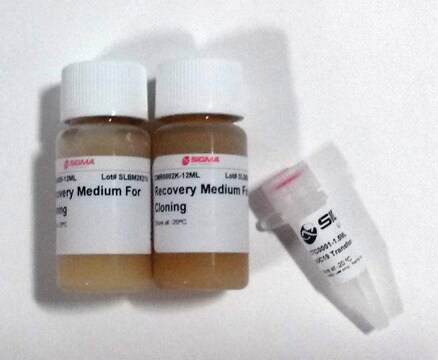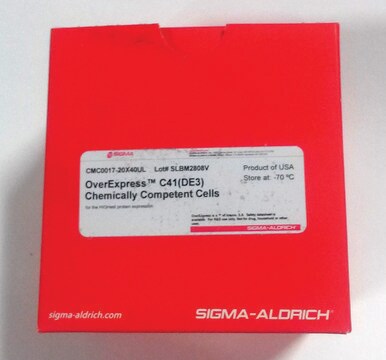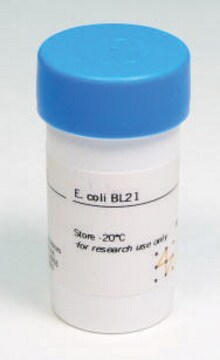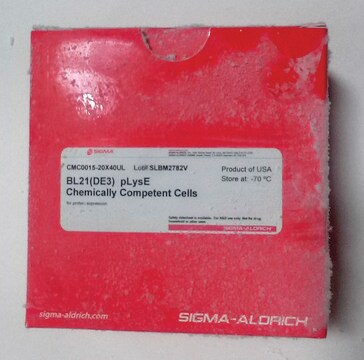CMC0016
BL21(DE3) Electrocompetent Cells
Escherichia coli, rod shaped
Synonim(y):
Szczep BL21
About This Item
Polecane produkty
Nazwa produktu
BL21(DE3) Electrocompetent Cells, for protein expression
pochodzenie biologiczne
Escherichia coli
klasa czystości
Molecular Biology
for molecular biology
tryb wzrostu
adherent or suspension
morfologia
rod shaped
metody
microbiological culture: suitable
transformacja komórek
competent cell type: electrocompetent
transformation efficiency: ≥5 × 109 cfu/μg
Warunki transportu
dry ice
temp. przechowywania
−70°C
Opis ogólny
Cloning efficiencies are increased 25-1,000 fold relative to other preparations of BL21 cells, which is essential for construction of complex expression libraries.
Genotype
F – ompT hsdSB (rB- mB-) gal dcm (DE3)
Cechy i korzyści
Komponenty
- BL21(DE3) electrocompetent cells
- pUC 19 transformation control DNA
- recovery medium for expression
produkt powiązany
Kod klasy składowania
10 - Combustible liquids
Wybierz jedną z najnowszych wersji:
Masz już ten produkt?
Dokumenty związane z niedawno zakupionymi produktami zostały zamieszczone w Bibliotece dokumentów.
Protokoły
BL21(DE3) Electrocompetent Cells are provided in 25 μL aliquots, sufficient for one reaction. Transformation is carried out in a 0.1 cm gap cuvette. Optimal settings for electroporation are listed in the table below. Note that alternate settings result in transformation efficienes about 20-50% lower. Typical time constants are 3.5 to 4.5 msec.
Nasz zespół naukowców ma doświadczenie we wszystkich obszarach badań, w tym w naukach przyrodniczych, materiałoznawstwie, syntezie chemicznej, chromatografii, analityce i wielu innych dziedzinach.
Skontaktuj się z zespołem ds. pomocy technicznej




